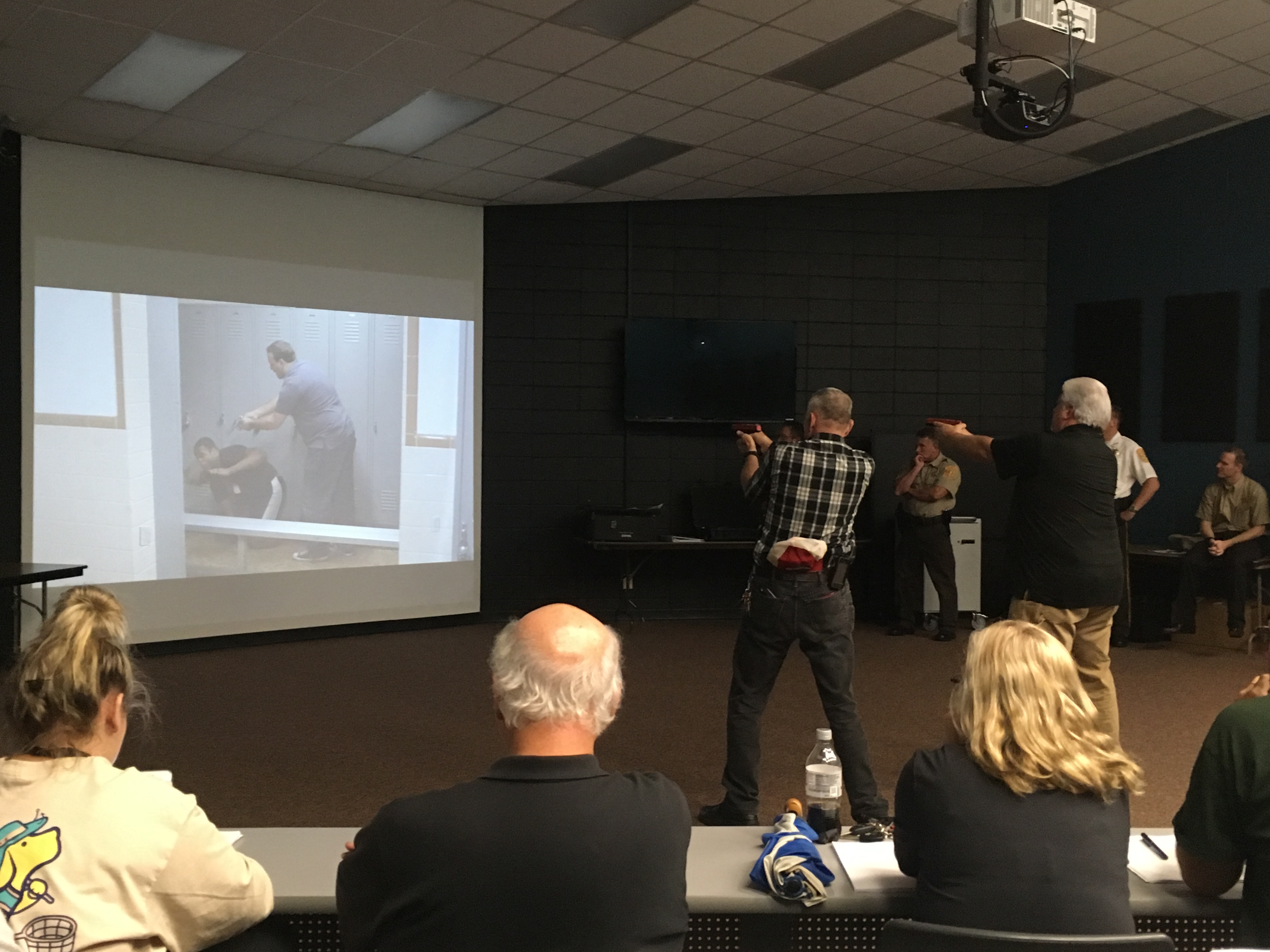CA students face simulated violent crime scenarios on Wallace State’s computerized virtual firing range. / W.C. Mann
HANCEVILLE – In the third week of the Cullman County Sheriff’s Office (CCSO) Citizens’ Academy (CA), students met at Wallace State’s Advanced Visualization Center to get hands-on with simulated firearms in virtual violent crime scenarios. They got to test their judgment, reflexes, and aim, and in a few cases even got to talk bad guys into surrendering.
All students who wished to do so were given the opportunity to take part in at least two use of force scenarios. Situations included traffic stops gone bad, escalating domestic disputes, business robberies and active shooters in schools and other places.
“This is a new thing that we get to do with the citizens’ academy,” said Sheriff Matt Gentry. “We were able to do it with the last academy, and it’s just a great opportunity to get you a one-on-one look at what a bad situation can be, in a controlled environment.”
Defensive tactics instructor Deputy Chad Whaley and firearms instructor Sgt. David Nunn led students through the scenarios, with Wallace State’s Brandy Parker controlling things from her computer.
Whaley talked about levels of force, and how law enforcement officers are required to match type and amount of force to the situation and opponent they face in any given situation.
“It starts,” he said, “basically with the uniform, the badge. That’s the first use of force we have. Being a law enforcement officer, when we drive up in a police car, we’re already displaying our force, because we are the authority on scene. And luckily for us, a lot of times that’s all it takes.”
Whaley went on to outline escalating levels of force, saying, “We have to react and respond accordingly, based on what the people are doing.”
- Verbal interaction with persons on the scene of a call
- “Open hand” soft techniques to gain control of a passively non-compliant person and escort them away from the immediate vicinity of trouble
- Grappling techniques to gain control of those who are actively resisting, but not fighting
- Use of intermediate weapons (tasers, batons, pepper spray) and unarmed combat techniques to defend against subjects who become violent
- Use of lethal force against subjects, whether armed or unarmed, who pose an immediate threat to the life or safety of the officer or another person and cannot readily be controlled by lesser means
Whaley emphasized the need for officers to be trained in the use of whatever type of force they use, saying that the use of force by an untrained officer has a strong likelihood of leading to litigation or prosecution.
He also emphasized the need for communication, explaining that it is always better for all involved if an officer can talk someone into compliance, instead of having to physically subdue someone in a fight, or, worst of all, having to take a life.
Whaley said, “There’s a big difference between being able to defend yourself and winning fights. Law enforcement, we’re not in it to win fights; we’re in it to control the situation, and that’s what use of force really is.”
Next week: SWAT
Copyright 2017 Humble Roots, LLC. All Rights Reserved.





























